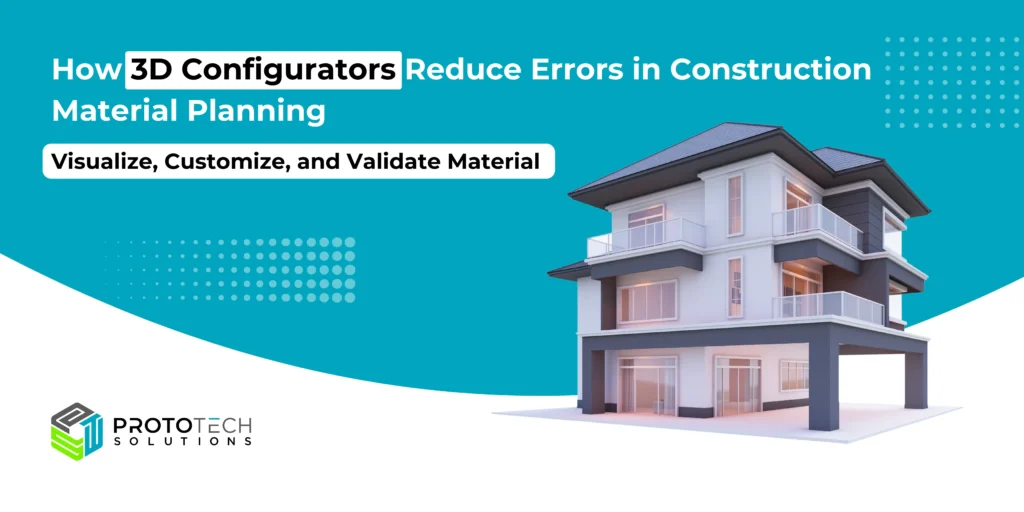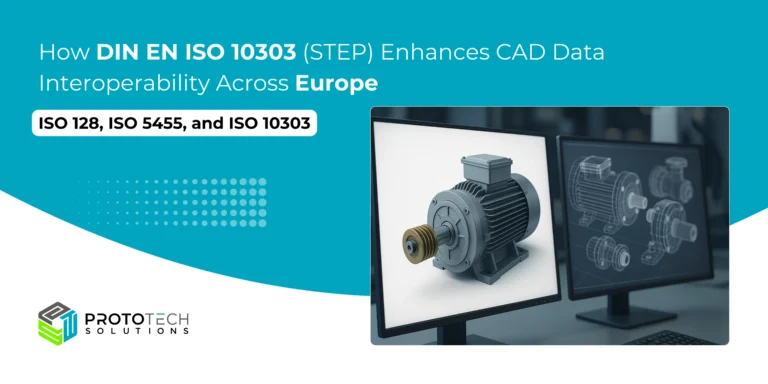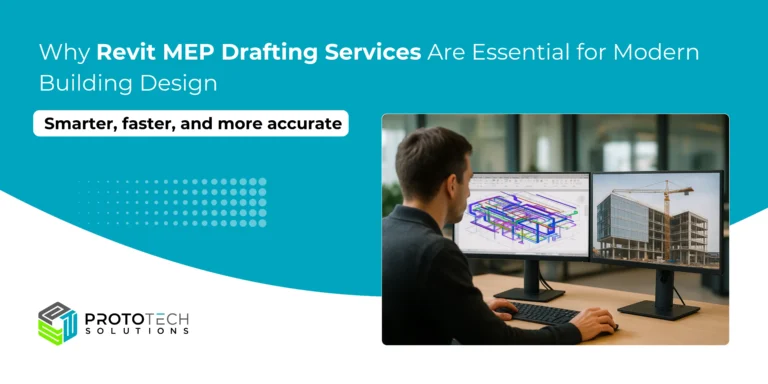How 3D Configurators Reduce Errors in Construction Material Planning

A 3D product configurator empowers consumers to design custom building materials while visualizing them in real time, boosting buying confidence and brand loyalty. Additionally, it streamlines workflows, minimizes waste, and optimizes inventory, ultimately saving time and money.
The 3D Visual Product Configurator Software Market was valued at USD 1.3 billion in 2023 and is projected to grow significantly, reaching USD 3.1 billion by 2030. This growth represents a robust CAGR of 7.5% during the forecast period 2024–2030, according to insights from Verified Market Reports.
In the construction industry, precision is non-negotiable. The intricate nature of projects and the critical need for accurate material specifications often give rise to considerable challenges. Errors in material planning can lead to costly delays, budget overruns, and compromised quality, creating hurdles for stakeholders at every level.
Recognizing these pain points, ProtoTech Solutions has been at the forefront of innovation, developing advanced 3D product configurators for a diverse range of industries. Drawing from our extensive experience, we’ve witnessed how these cutting-edge tools are revolutionizing the construction landscape.
The advent of 3D configurators has introduced a new era of efficiency in material planning and procurement. These tools allow users to visualize, customize, and validate material specifications with unmatched precision, ensuring alignment with project requirements. Let’s learn more about it.
What is a 3D configurator?
A 3D configurator is a powerful software tool that lets users visualize and customize products in a three-dimensional environment. It serves as a versatile solution across various industries, enhancing design, production processes, customer engagement, and even training. With its ability to provide real-time interaction, 3D configurators empower customers, sales teams, and engineers to design, modify, and interact with products efficiently and intuitively.
In the realm of construction materials, 3D configurators play a transformative role. They allow clients to design and adjust building components interactively, offering a clear understanding of how different materials complement or contrast with one another. Users can experiment with aesthetic choices, explore textures and finishes, and ensure that every component integrates seamlessly before finalizing a purchase. This capability not only enhances decision-making but also minimizes errors, streamlines workflows, and boosts overall confidence in the design process.
Common Challenges in Construction Material Planning
Material planning in construction often faces hurdles such as:
- Inaccurate Estimations: Miscalculations in the quantity or quality of materials can lead to shortages or surpluses, both of which increase costs.
- Lack of Visualization: Relying solely on 2D plans or spreadsheets makes it challenging to visualize how materials fit within the project.
- Communication Gaps: Misunderstandings between architects, engineers, and contractors regarding material specifications often lead to errors.
- Rework and Delays: Errors in material planning lead to frequent changes, causing delays and escalating costs.
- Sustainability Concerns: Wastage of materials not only affects budgets but also increases the environmental impact of construction projects.
The Role of 3D Configurator in Construction Material Planning
Accurate Material Quantification
3D configurators calculate the exact quantities of materials required for a project. Using precise algorithms, they reduce the risk of over-ordering or under-ordering materials.
- Example: A configurator can calculate the exact volume of concrete needed for a foundation, accounting for the size and design complexities.
Enhanced Visualization
One of the most significant advantages of 3D configurators is their ability to provide realistic visualizations of materials and products. Traditional 2D drawings often fail to convey the full scope of a project, leading to misunderstandings about dimensions and aesthetics. With 3D models, stakeholders can rotate, zoom in, and explore every angle of a product.
- Improved Accuracy: By allowing users to see how different components fit together in real time, 3D configurators help identify potential conflicts or design flaws early in the planning process.
- Informed Decision-Making: Clients can make more informed choices about materials and designs when they can visualize them accurately.
Real-Time Customization
3D configurators empower users to customize their selections dynamically. As users adjust dimensions or select different materials, the configurator updates the visual representation instantly.
- Immediate Feedback: This immediate feedback loop allows clients to see how changes affect the overall design and functionality.
- Error Reduction: By enabling real-time adjustments, configurators minimize the risk of ordering incorrect sizes or incompatible materials.
Automated Bill of Materials (BOM)
Once a configuration is finalized, many 3D configurators automatically generate a Bill of Materials (BOM) that details all required components. This automation reduces human error associated with manual entry.
- Accurate Ordering: An automated BOM ensures that all necessary items are accounted for, reducing the likelihood of missing materials during procurement.
- Streamlined Processes: Integrating BOM generation with existing systems like ERP (Enterprise Resource Planning) or PIM (Product Information Management) enhances workflow efficiency.
Sustainability and Waste Reduction
By providing precise material requirements, configurators reduce wastage and promote sustainable practices.
- Example: Optimal cutting patterns for materials like wood or steel can be generated to minimize leftovers.
Supporting Sales Teams
For construction companies that operate on a B2B model, sales teams often face challenges when communicating complex product options to clients. A 3D configurator serves as an invaluable tool for these sales representatives.
- Interactive Demos: Sales teams can use the configurator during client meetings to demonstrate various configurations and pricing options instantly.
- Faster Closing Times: By providing accurate quotes based on real-time configurations, sales representatives can shorten the sales cycle and improve customer satisfaction.
Integration with Existing Systems
Modern 3D configurators are designed to integrate seamlessly with other business systems. This capability ensures that data flows smoothly between platforms, reducing the chances of errors caused by data silos.
- Enhanced Collaboration: Integrating with project management tools allows for better communication among team members and stakeholders.
- Data Consistency: Consistent data across platforms minimizes discrepancies that could lead to errors in material planning.
Benefits Beyond Error Reduction
While reducing errors is a primary benefit of using 3D configurators in construction material planning, there are additional advantages:
- Cost Savings: By minimizing waste and ensuring accurate orders, companies can save significantly on material costs.
- Increased Customer Satisfaction: Clients appreciate being able to visualize their choices clearly and make informed decisions without pressure.
- Enhanced Marketing Opportunities: High-quality 3D visuals can be used across marketing channels, improving brand presence and engagement.
Industries Leveraging 3D Configurators
While 3D configurators are widely used in general construction, specific industries have seen significant benefits, including:
- Residential Construction: For customizing interiors like kitchens, bathrooms, and flooring.
- Commercial Buildings: For optimizing layouts and visualizing façade materials.
- Infrastructure Projects: For large-scale material planning in bridges, roads, and tunnels.
- Modular Construction: For pre-configuring components and streamlining assembly processes.
Conclusion
As the construction industry continues to evolve with technology, adopting tools like 3D configurators is becoming essential for success. These tools not only reduce errors in material planning but also enhance overall efficiency and customer satisfaction. By investing in a robust 3D configuration solution, construction companies can position themselves as leaders in an increasingly competitive market while ensuring that their projects are completed on time and within budget.
Embracing this technology is not just about keeping up with trends; it’s about transforming how businesses operate and deliver value to their clients. As we look toward the future of construction, it’s clear that 3D configurators will play a pivotal role in shaping efficient workflows and successful project outcomes.
If you’re considering creating a 3D configurator for your projects, let’s connect with our experts to explore how ProtoTech Solutions can drive the success and growth of your project. With our advanced AI-driven tools and expertise, we can help you streamline material planning, reduce errors, and improve overall project efficiency. Reach out today and discover how we can support your goals with innovative, precision-focused solutions.






